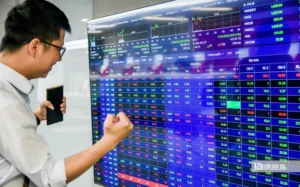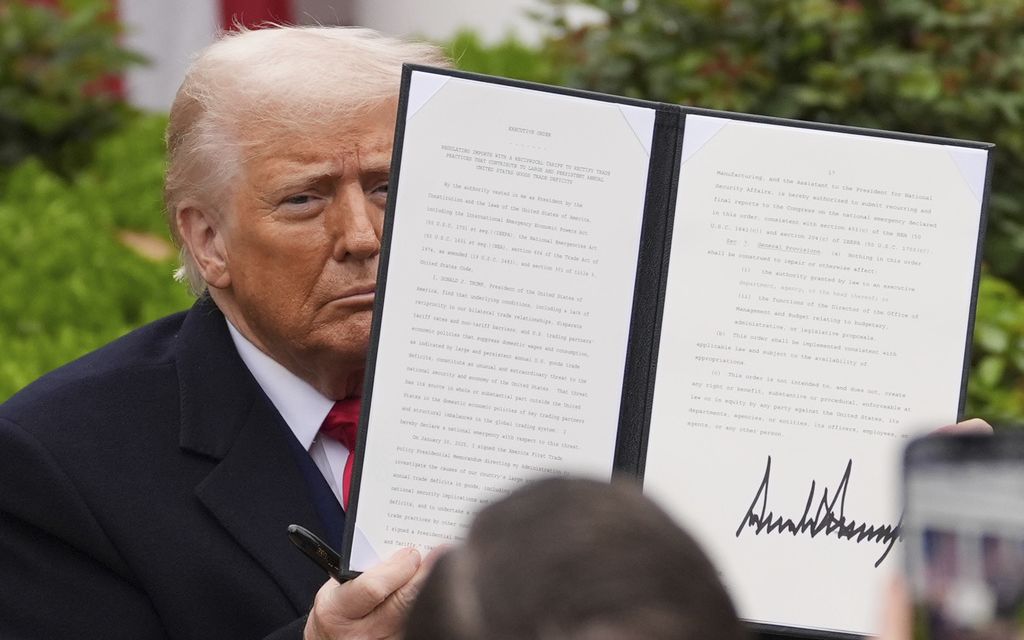Asia-Pacific markets plunged after US President Donald Trump imposed strong retaliatory tariffs on more than 180 countries and territories.
Speaking at the White House Rose Garden on April 2, US President Donald Trump affirmed that this is one of the most important days in US history when he announced a series of new tax policies.
“April 2nd will forever be remembered as the day American industry was reborn. For decades, our country has been taken advantage of by both allies and adversaries,” Trump declared.
According to data from Reuters, the new US tax rates for some countries and regions include: China (34%), European Union (20%), Japan (24%), South Korea (25%), Switzerland (31%), UK (10%), Malaysia (24%), India (26%), Brazil (10%), Indonesia (32%), Vietnam (46%), Singapore (10%), Ukraine (10%), Venezuela (15%).
Mr Trump stressed that countries that want to be exempted from US reciprocal tariffs must change their trade policies. “End tariffs, take down barriers, stop manipulating currencies and start buying tens of billions of dollars of American goods,” he declared.
Asia-Pacific stock markets immediately reacted to the news on the morning of April 3. Most indexes fell sharply, with the benchmark Nikkei 225 index down 2.68%, narrowing a decline of more than 4% at the opening, while the Topix index fell 2.97%, also narrowing a decline of more than 4% at the beginning of the session.
Hong Kong’s Hang Seng Index fell 1.16 percent in early trading while mainland China’s CSI 300 fell 0.48 percent.
In South Korea, the Kospi index fell 1.29%, narrowing a decline from more than 3% earlier, while the small-cap Kosdaq fell 0.61%.
javascript:if(typeof(admSspPageRg)!=’undefined’){admSspPageRg.draw(2030142);}else{parent.admSspPageRg.draw(2030142);}
Australia’s S&P/ASX 200 index fell 1.17%.
Gold prices hit a record high and were trading at $3,153.92 an ounce as of 9:53 a.m. Singapore time, as investors flocked to the precious metal.
US stocks fell sharply
US stocks fell sharply in after-hours trading after President Donald Trump announced a series of new tariffs, starting at at least 10% and possibly higher for some countries, raising the risk of a global trade war that threatens to negatively affect the US economy.
Futures on the Dow Jones Industrial Average fell 918 points, or 2.2%. The decline was even steeper for the S&P 500, with futures down 3.2%. Nasdaq-100 futures suffered the biggest losses, down 4.1%.
Shares of multinational corporations fell across the board. Specifically, Nike fell 7%, Apple lost 6%. The group of businesses specializing in selling imported goods was hit hardest: Five Below shares fell 11%, Gap plunged 12%. At the same time, the technology group was also in the red, with Nvidia losing 4% and Tesla falling 5%.
Many experts say that new developments have caused negative sentiment to overshadow the market.
“It has created negative sentiment about the future, slowing things down,” said John Luke Tyner, fixed income analyst at Aptus Capital Advisors in Fairhope, Alabama.
“This is the worst-case scenario that the market expects, and it would be enough to send the U.S. economy into recession. That’s why the outlook is so weak,” said Jay Hatfield, CEO of Infrastructure Capital Advisors.
US analysts also predict that trading partners will respond with countermeasures, which could lead to higher prices for goods ranging from bicycles to wine.
“We only have one side of the story. The other side of the story is how other countries react to what we’re doing,” Walter Todd, chief investment officer at Greenwood Capital in Greenwood, South Carolina, told Reuters. “Then it’s how the market takes in and reacts to what’s being said now.”
















